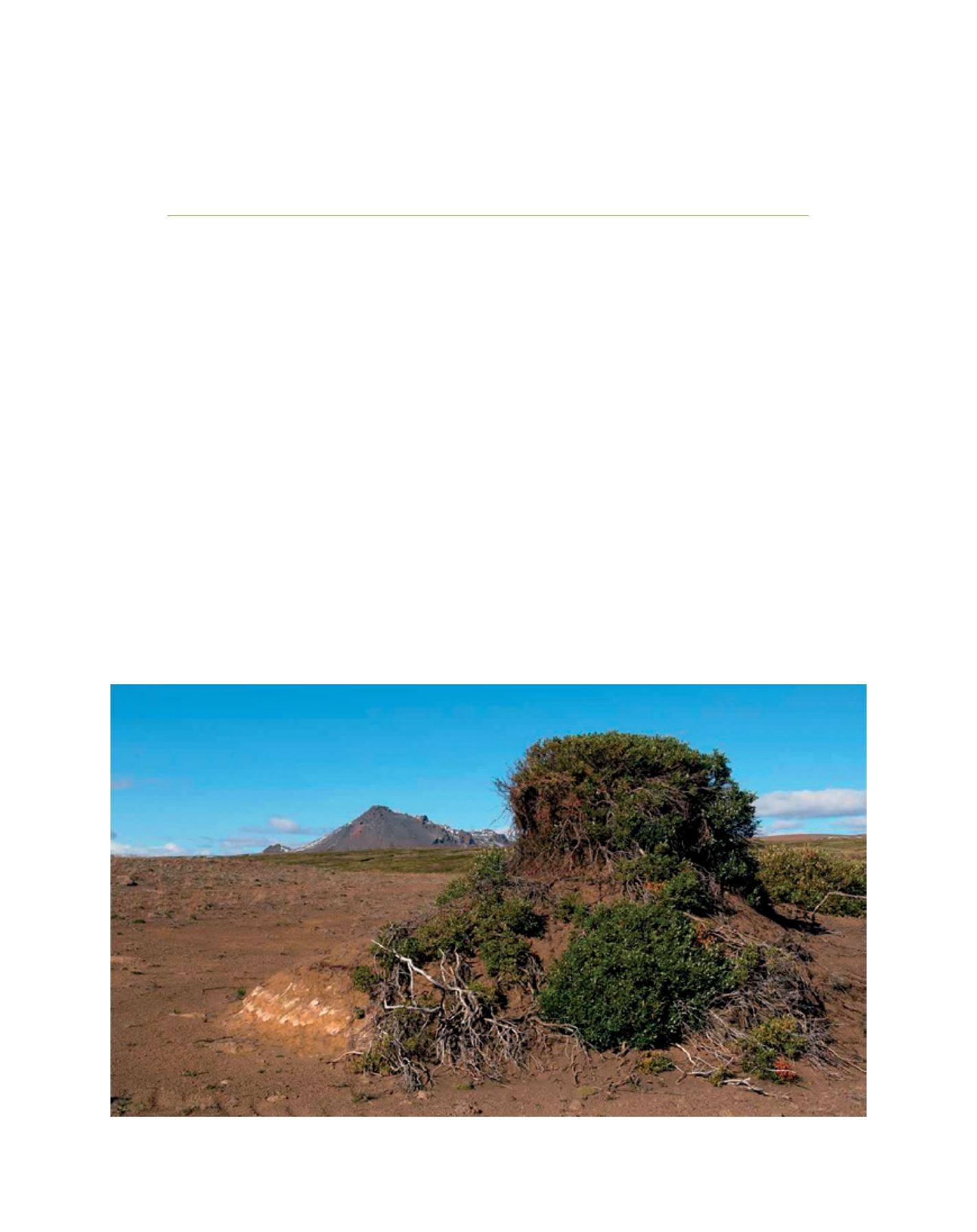

[
] 40
Building on partnerships and strong stakeholder
involvement to tackle land degradation
Thorunn Petursdottir, Soil Conservation Service of Iceland
and Hreinn Oskarsson, Hekla Forest Project & Icelandic Forest Service
I
celand is ecologically the most damaged country
in Europe. The story of its ecosystem degradation
stretches as far back as to the Norse settlement, or
approximately 1,100 years ago when the Vikings discov-
ered this pristine volcanic island located just south of the
Arctic Circle in the Atlantic Ocean.
At the time of settlement, around two-thirds of Iceland was
vegetated with at least 25 per cent woodland cover. Due to
a harsh climate and erodible volcanic soils, the Icelandic
ecosystems were highly vulnerable to the year-round livestock
grazing and woodland utilization practised by the settlers.
Over the following centuries, unsustainable land use triggered
ecosystem degradation resulting in extreme loss of fertile soil
and vegetation. Today, around half of the original vegeta-
tion cover is lost including almost all the woodlands; leaving
approximately 42 per cent of Iceland desolated. Furthermore,
considerable to very severe erosion still occurs on about half
of the remaining ecosystems. Most of the desertification can
be directly related to mismanagement of natural resources,
but in a few cases the deserts were formed solely by volcanic
eruptions or they are located beyond vegetation limits.
Organized work aiming to halt soil erosion and further
degradation and to protect the remaining woodlands started
nationwide in 1907 when the Icelandic Government approved
the first Act on forestry and protection against soil erosion.
It was followed up by the establishment of two governmen-
tal agencies, the Icelandic Forest Service (IFS) and the Soil
Conservation Service of Iceland (SCSI). Ever since, the two
agencies have actively practised and facilitated ecosystem
conservation and ecosystem restoration through diverse
reclamation and forestation projects. Furthermore, in recent
decades most of their projects have centred on stakeholder
involvement and participatory approaches in order to ensure
Image: Johann Thorsson
Severe erosion still occurs on about half of the remaining ecosystems in Iceland
L
iving
L
and
















